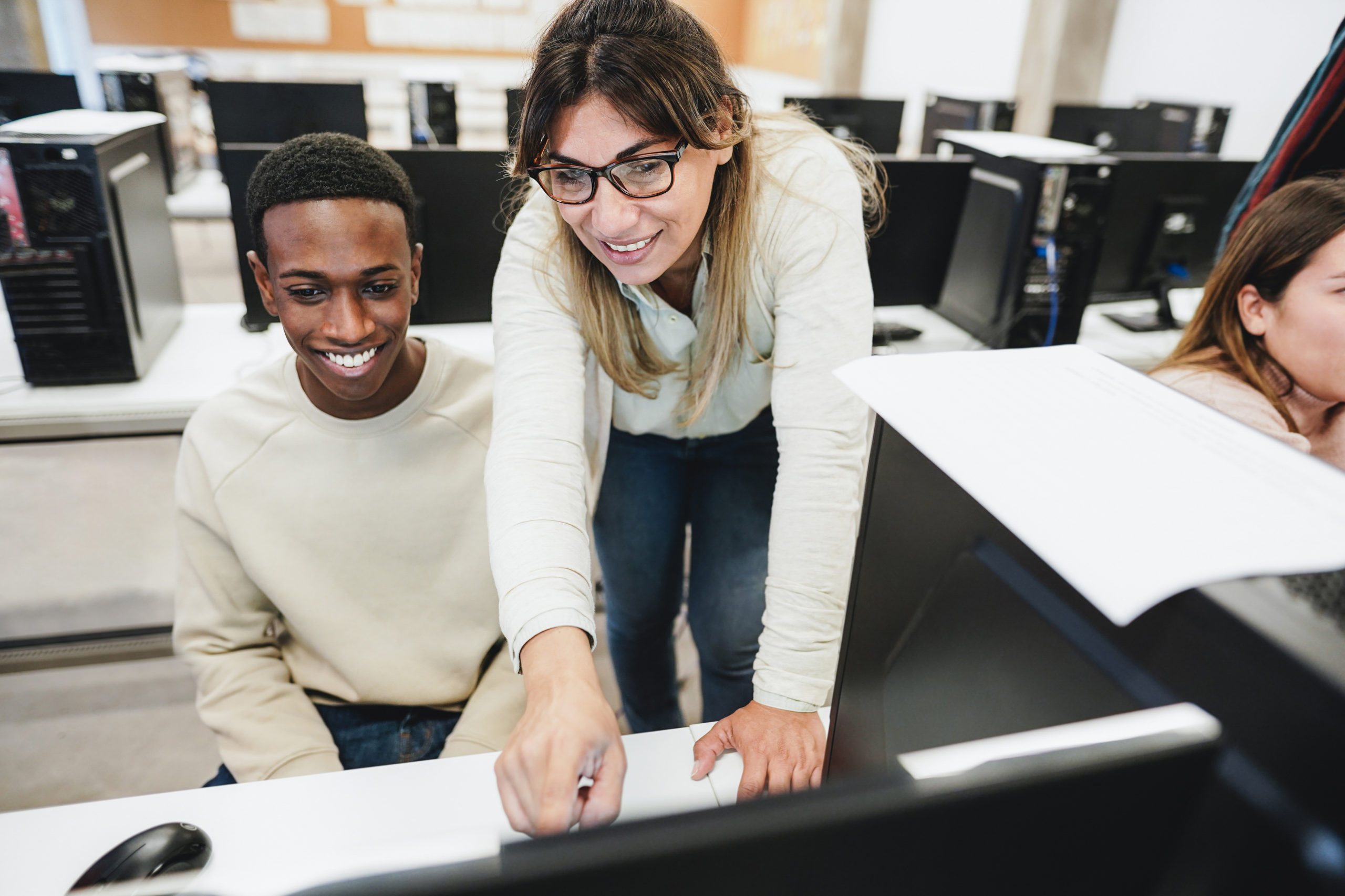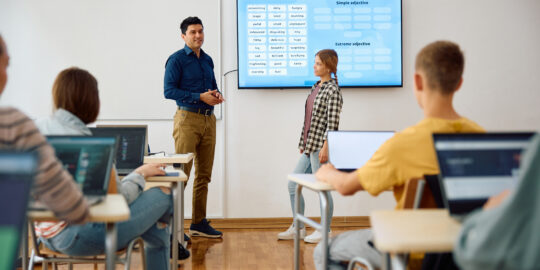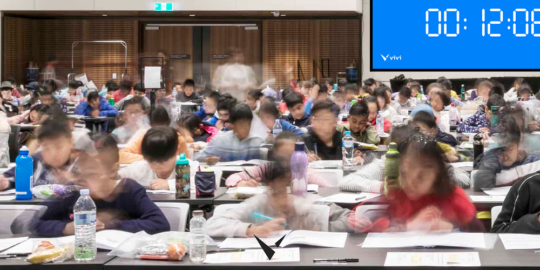
Technology has transformed life as we know it, and education is no exception. Today’s classrooms look and operate quite differently than they did ten or twenty years ago. Gone are the days when classrooms were characterized by traditional equipment such as blackboards and chalkboards. In fact, the impact of educational technology in the classroom can be felt in every area and subject.
Indeed, the modern-day classrooms house various technologies such as iPads, screen mirroring technology, smartphones, tablets, and laptops, all of which are supported by a range of software from cloud-based applications.
Used to handling technology in their personal life, the current crop of digital-native students has become so dependent on technology that its incorporation in the classroom has become a necessity rather than an added advantage. So what is the impact of educational technology in the classroom? Continue reading to find out.
What kind of Impact Does Educational Technology Have in the Classroom?
In the pre-technological era, educators didn’t have many tools to improve their teaching process. They primarily depended on traditional equipment such as chalk and chalkboards. And since teachers were the primary source of information, they stood at the center of the classroom, delivering lectures while the students listened passively.
The emergence of educational technology has transformed the classroom from educator-centered to student-centered, thereby making learning easier.
A student-centered classroom means that the learning responsibility is put on the student with the intention of getting them out of their shell and teaching them how to become independent. Here is a closer look at the impact educational technology has had in the classroom.
Related: How to Improve Student Engagement in the Classroom
Educational Technology Enhances Student Engagement
Educational technology can make learning highly engaging and collaborative. Instead of simply memorizing facts out of a textbook or from a lecture, students learn through critical thinking and interacting with the lesson, their peers, and the instructor. Many teachers use educational technology to present material, facilitate group discussions, and quiz students. It could also involve students playing educational games independently or in small groups, taking a virtual trip anywhere in the world, and revisiting history as a participant.
For teachers, the impact of educational technology in the classroom is endless. From using screen mirroring technology to create a more dynamic learning space where educators can roam and engage with the display and the students from anywhere, to using simulation tools to help students better understand various concepts, educational technology is making the teaching process more effective.
Educational Technology Affords Better Access to Resources
The advent of the internet has made it easy to access information. All you need is an internet connection to access information from anywhere, anytime—you can find almost anything online.
For learners, this means access to everything from educational apps and research materials to open resources and edutainment. And instead of working independently or being an observer in a group, they can actively collaborate on group projects, share their feedback and work, and learn what it’s like in the real world to reach goals as a team.
Educators can use technology to provide access to course materials by setting up portals via learning management systems. Alternatively, they can provide access to course-specific software for each student.
Educators can also ensure that students can engage with and have a better view of what is being taught by using screen mirroring technology. This technology takes any individual educational technology and makes it come alive for the entire classroom by moving what’s on a small device to the classroom display.
Educational Technology Takes the Classroom into the World
Thanks to educational technology, the classroom no longer has boundaries. In addition to the person teaching a particular course, instruction can be provided by any number of experts in a given field through the use of technology.
An article on technology published by Purdue University gives the example of students learning about the Arctic from a rural U.S classroom. These students can learn about the Arctic in a myriad of ways.
They can follow the expedition of a team of scientists in that region, read their blog posts, view their photos, talk live with the scientists via a videoconference, or even email questions to them. Students can share what they’ve learned with students in other classrooms in other states who are following the same expedition.
Educational Technology Has Led to Increased Use of Innovative Teaching Methods in the Classroom
The impact of educational technology in the classroom has also changed the way students are taught and how they access information. Educators facilitate learning by encouraging students to discover facts and perspectives on their own versus spoon-feeding them from the front of the classroom. From listening to podcasts to watching video-recorded lectures to accessing real-world case studies online, technology has opened up the possibility of using innovative teaching methods.
Educators can also leverage classroom response systems to evaluate how well students have understood the course material. Based on the results, they can adjust their teaching techniques to improve student understanding.
What’s more, digital materials are what students are most familiar with in their social lives, making it a much better fit for today’s students and better able to accommodate students’ needs.
Educational Technology Encourages Self-Paced Learning
In traditional classrooms, students who learn differently or found it hard to grasp new concepts would quickly fall behind their peers. With self-paced learning enabled by technology, students can learn at their own pace–those who need extra help or more time can practice outside of the class-guided lessons or additional coursework. The same goes for students who want more of a challenge.
Educational technologies provide students with access to online learning resources online on demand. These resources also have the capability to provide educators with a sense of what extent and which areas a student may need extra help with.
And while most students are adept with many technologies, educational technology expands their knowledge, allowing students to acquire digital literacy and other skills that will come in handy when they enter the workforce.
To further this personalized learning environment that places additional attention on the needs of the student, one of the excellent methods educators can use to enhance self-paced learning is 1:1 computing. This is an educational practice where learning institutions provide every student with a tablet or laptop, allowing students to access the internet to engage with course materials, textbooks, and other learning resources.
1:1 computing uses technology to create an equitable classroom environment where students have equal and easy access to information.
Related: What Types of Technology Can Be Used in the Classroom?
What Are the Top Trends in Educational Technology?
The past two years have seen the pace of digital transformation accelerate immeasurably. In fact, it’s estimated that the value of the educational technology sector will grow to $680 million by 2027. This will mostly be because of cloud services, virtual reality, and mobile technology, creating new possibilities for the impact of educational technology in the classroom via accessible and immersive learning. With that in mind, here’s a look at the top trends in educational technology:
Video-Assisted Learning
Video-assisted learning is rapidly becoming a mainstay in the classroom. No longer are televisions being wheeled into classrooms. With digital devices and the internet, videos can be used for learning in the classroom every day.
That said, screen mirroring technology increases the effectiveness of video-assisted learning. It allows students to share their work with teachers and other students, allowing for collaboration and on-the-spot feedback about projects.
This can encourage a sense of community in the classroom and save teachers time because they can immediately bring up lesson materials, including videos, from any screen in the room.
Artificial Intelligence (AI)
The use of AI in the classroom has increased over the past couple of years. So why is this the case? AI can automate various activities in education, such as grading. With it, educators can automate the grading of fill-in-the-blank and multiple-choice questions. As such, educators can easily grade assessment tests.
Additionally, both educators and learners can benefit from AI. For instance, learners can get assistance from AI tutors when teachers are too engaged to take care of each student’s needs.
Gamification
Gamification helps turn learning into a more fun and engaging process–students can learn and practice while at the same time joining in on exciting games. With so many students enjoying video games, students are more receptive to gaming elements in the classroom.
That said, while gamification is mostly popular in the K-12 education sector, that doesn’t mean that it can’t be used at higher levels of education to improve engagement levels for the learners.
STEAM
STEAM programs are the new educational technology improvement over STEM programs. This trend applies meaningful Science, Technology, Engineering, Art, and Maths content to provide solutions to real-world issues through creative design and hands-on learning activities.
STEAM offers numerous benefits, such as helping learners discover the world around them and recognize its vastness, think creatively and critically, and test theories. The hands-on learning that comes with using STEAM also fosters collaboration among students.
Social Media in Learning
Many educational institutions have started incorporating social media as a communication tool with which students can interact with each other and with their peers. Students can share learning resources, engage in group discussions, or comment on someone else’s posts.
Social media platforms such as YouTube have evolved over the years and are now more than just entertainment platforms, joining the array of other learning methods that are having an impact on educational technology in the classroom.
You can find educational videos about basically any topic. YouTube is an excellent way for educators to simplify complex topics and deliver them to students in a way that they can understand better.
Screen Mirroring Technology
Another interesting trend in educational technology that can be used in the classroom is screen mirroring. This technology enables educators to manage, share, and display any screen in the classroom at any time to the main classroom display.
This improves collaboration, transparency, and sharing of ideas in the classroom, which in turn creates a more accommodating, collaborative, and effective learning process for all students.
Related: How Screen Mirroring Technology Can Change a Classroom
An effective screen mirroring software will function with all types of devices, displays, media, and any number of users. This means that educators can present anything to a classroom from any connected phone, tablet, or laptop, bypassing any tricky technology problems and diving right into teaching.
In fact, a 2020 McKinsey report found that the use of digital presentation technology such as screen mirroring resulted in better academic performance, given that these technologies work to engage students by encouraging collaboration and open discussion.
Additionally, the right screen mirroring technology will include digital signage capabilities, allowing it to be used in a learning institution for other purposes besides classroom learning. School admins can command all screens from a central location and use them to broadcast emergencies and communicate with students with a single click of a button.
Choose Screen Mirroring Technology for Your School
Vivi is the only wireless digital signage and screen mirroring solution designed for education. Created to make an impact on educational technology in the classroom, Vivi amplifies other technologies and encourages collaborative learning in community.
Contact us today to book a demo and see how we can maximize the impact of technology in your classrooms.



